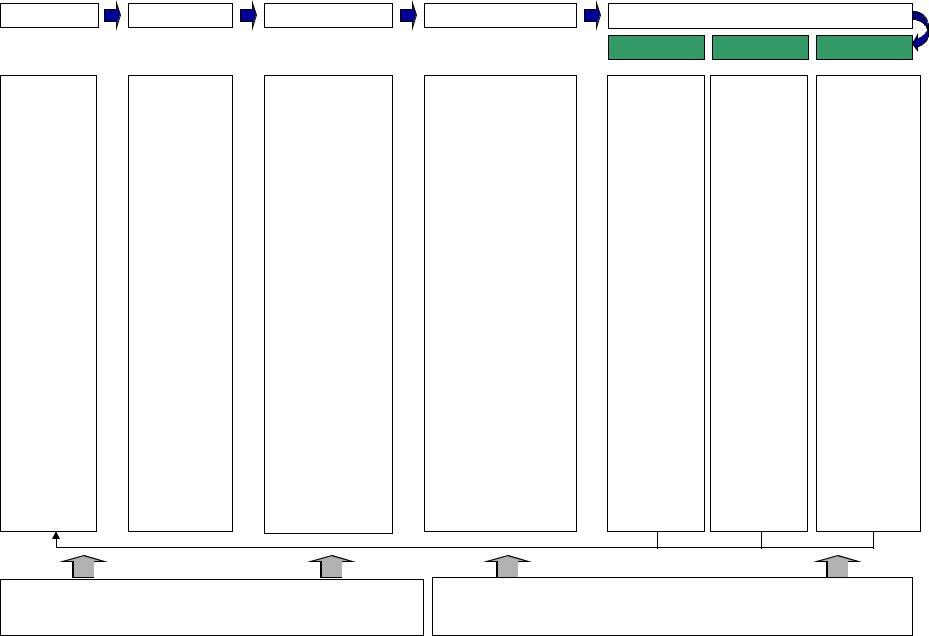The Generic Logic Model for NIFA Reporting serves as an illustrative aid, guiding reports on the wide-ranging activities funded by the National Institute of Food and Agriculture (NIFA), including research, education, and extension initiatives. While not exhaustive, this model lays down a structured framework encompassing the core aspects: Situation, Inputs, Activities, Outputs, Outcomes, alongside Assumptions and External Factors that encompass a project's environment. Starting from a 'Situation' that identifies a challenge or opportunity, such as the rising challenges in agriculture due to globalization or the imperative to improve animal health through genetic engineering, it moves to 'Inputs', detailing resources like faculty, staff, and funding that fuel the project. 'Activities' spell out the actions undertaken, from conducting research to developing new methodologies. The ensuing 'Outputs' include tangible products like scientific publications and patents, leading to 'Outcomes', which are delineated into Knowledge, Actions, and Conditions—marking the learning, behavior changes, and societal impacts respectively generated by the project. The model also emphasizes the importance of understanding 'Assumptions' underlying the project's success, and 'External Factors' outside the control of project managers, such as economic shifts or weather variability, placing the model within a realistic context. Through this structured approach, the Generic Logic Model aims to streamline the reporting process, providing clear categories that reflect the underlying theory and practice of NIFA-funded endeavors, ensuring a comprehensive accounting of efforts to enhance agricultural, educational, and societal wellbeing.
| Question | Answer |
|---|---|
| Form Name | Generic Logic Model Form |
| Form Length | 1 pages |
| Fillable? | No |
| Fillable fields | 0 |
| Avg. time to fill out | 15 sec |
| Other names | generic logic model form template, logic model template word, generic logic model sample, generic logic model form sample |

Generic Logic Model for NIFA Reporting
(This model is intended to be illustrative guide for reporting on
Situation |
|
Inputs |
|
Activities |
|
Outputs |
|
Outcomes |
|
|
|
|
|
|
|
|
|
Knowledge Actions Conditions
Description of |
|
|
challenge or |
What we invest: |
What we do (Activities): |
opportunity |
|
|
|
- Faculty |
- Design and conduct |
- Farmers face |
|
research |
- Staff |
- Publish scientific |
|
increasing |
|
articles |
challenges from |
|
|
- Students |
- Develop research |
|
globalization |
|
methods and |
|
|
|
- Opportunity to |
- Infrastructure |
procedures |
|
- Teach students |
|
improve |
|
|
- Federal, state |
- Conduct |
|
animal health |
and private |
education |
through genetic |
funds |
- Provide counseling |
engineering |
|
- Develop products, |
|
|
|
- Insufficient # of |
- Time |
curriculum & resources |
|
|
|
trained & diverse |
- Knowledge |
Who we reach |
professionals |
|
(Participation): |
entering |
|
|
- The collection |
|
|
agricultural fields |
of stakeholder |
- Other scientists |
- Youth at risk |
opinions |
- Extension Faculty |
|
- Teaching Faculty |
|
|
|
|
- Invasive species is |
|
- Students |
|
- Federal, state & |
|
becoming an |
|
|
|
private funders |
|
increasing |
|
|
|
- Scientific journal, industry |
|
problem |
|
|
|
& popular magazine |
|
|
|
|
- Bioterrorism |
|
editors |
|
- Agencies |
|
|
|
|
- Obesity crisis |
|
- Policy and decision- |
|
makers |
|
|
|
|
- Impaired water |
|
- Agricultural, |
|
environmental, life & |
|
quality |
|
|
|
human science industries |
|
|
|
|
|
|
- Public |
Products, services and events that are intended to lead to the program’s outcomes:
-Scientific publications
-Patents
-New methods & technology
-Plant & animal varieties
-Practical knowledge for policy and
-Information, skills & technology for individuals, communities and programs
-Participants reached
-Students graduated in agricultural sciences
Occurs when there is a change in knowledge or the participants actually learn:
-New fundamental or applied knowledge
-Improved skills
-How technology is applied
-About new plant & animal varieties
-Increased knowledge of
-Policy knowledge
-New improved methods
Occur when there is a change in behavior or the participant’s act upon what they’ve learned and:
-Apply improved fundamental or applied knowledge
-Adopt new improved skills
-Directly apply information from publications
-Adopt and use new methods or improved technology
-Use new plant & animal varieties
-Increased skill by youth & adults in making informed life choices
-Actively apply practical policy and
Occur when a societal condition is improved due to a participant’s action taken in the previous column.
For example, specific contributions to:
-Increased market opportunities overseas and greater economic competitiveness
-Better and less expensive animal health
-Vibrant & competitive agricultural workforce
-Higher productivity in food provision
-Better
-Safer food supply
-Reduced obesity and improved nutrition & health
-Higher water quality and a cleaner environment
ASSUMPTIONS - These are the premises based on theory, research, evaluation knowledge etc. that support the relationships of the elements shown above, and upon which the success of the portfolio, program, or project rests. For example, finding animal gene markers for particular diseases will lead to better animal therapies.
EXTERNAL FACTORS - A brief discussion of what variables have an effect on the portfolio, program or project, but which cannot be changed by managers of the portfolio, program, or project. For example, a plant breeding program’s success may depend on the variability of the weather...etc.
Version 1.3